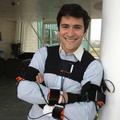Cited By
View all- Alves de Abreu BPaim GAlrahis LFlores PSinanoglu OBampi SAmrouch H(2025)On the Efficacy and Vulnerabilities of Logic Locking in Tree-Based Machine LearningIEEE Transactions on Circuits and Systems I: Regular Papers10.1109/TCSI.2024.345754172:1(180-191)Online publication date: Jan-2025
- Mahapatra SChandola V(2024)Learning manifolds from non-stationary streamsJournal of Big Data10.1186/s40537-023-00872-811:1Online publication date: 23-Mar-2024
- Mekruksavanich SJantawong PPhaphan WJitpattanakul A(2024)Convolutional Neural Network with CBAM Module for Fitness Activity Recognition Using Wearable IMU Sensors2024 Joint International Conference on Digital Arts, Media and Technology with ECTI Northern Section Conference on Electrical, Electronics, Computer and Telecommunications Engineering (ECTI DAMT & NCON)10.1109/ECTIDAMTNCON60518.2024.10480008(567-571)Online publication date: 31-Jan-2024
- Show More Cited By



